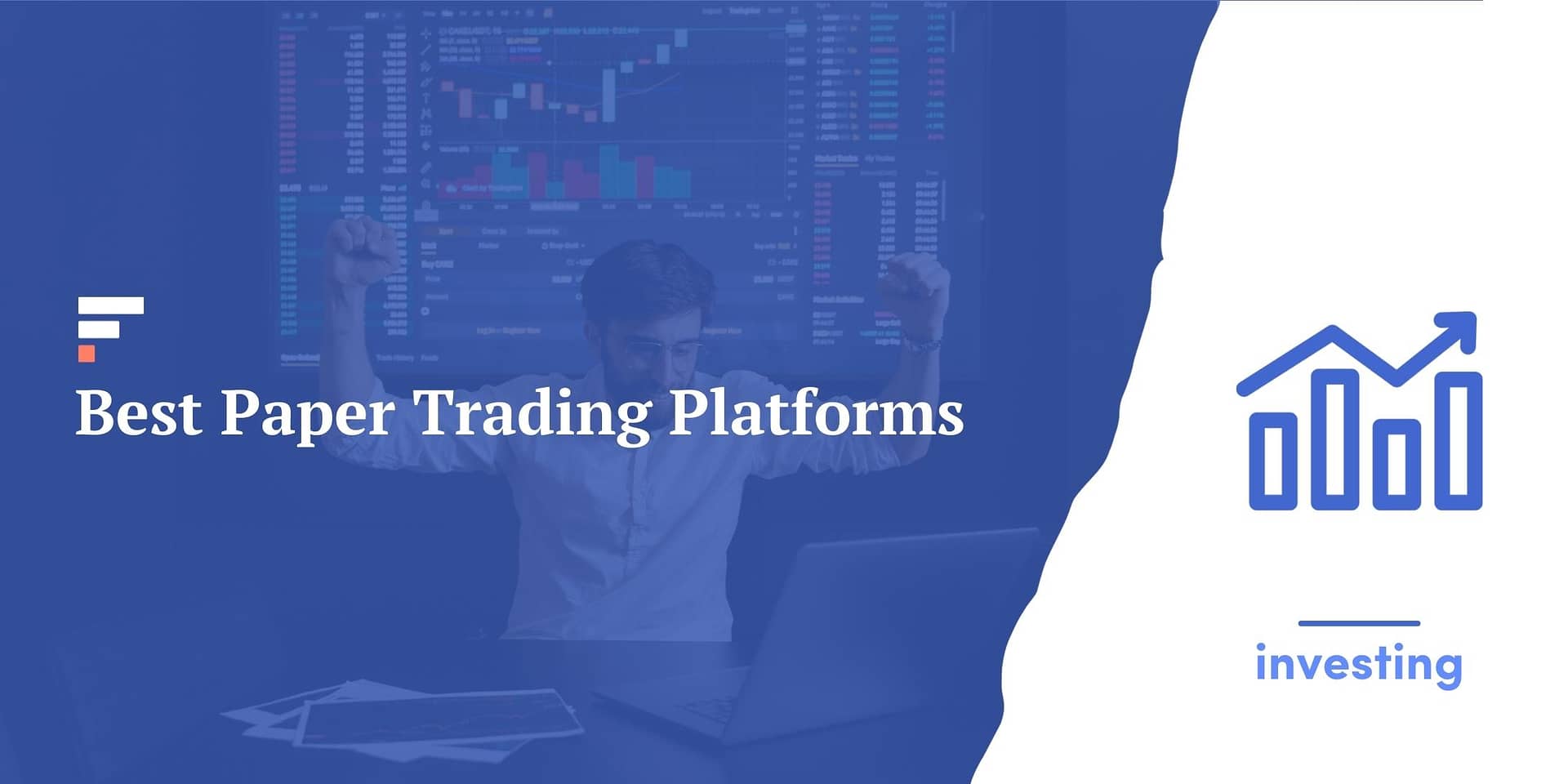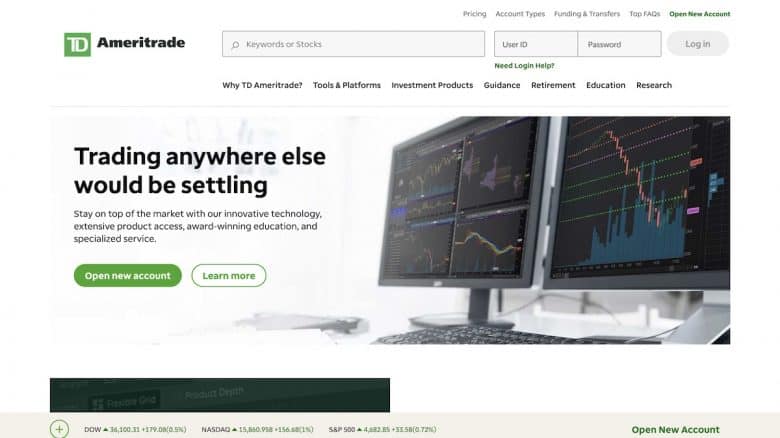Investing in stocks can be very profitable. It can also be unprofitable, and many people have lost a great deal of money by trading before they are ready. But how do you gain that necessary experience without risking your hard-earned money? Paper trading is one answer to that question.
What is Paper Trading?
Paper trading is the practice of buying and selling stocks with a simulated account. Everything works as it would with a real live brokerage account, except that you don’t actually buy the stocks. Your portfolio is simply a representation of what would have happened if you had bought the stocks.
Stock simulator software is designed to let you practice stock trading and learn by trial and error without excessive risk. You won’t benefit from your good choices, but you won’t pay a price for your bad ones either.
Paper trading has advantages and disadvantages, and it’s important to understand them before you
Choosing a Stock Simulator or Demo Account
If you are choosing a stock market simulator, there are obvious benefits to first choosing a broker you want to trade with, and then using their demo account. This will allow you to get used to the platform while paper trading. You can also use the demo account as a way to evaluate a broker, and then commit capital when you are happy with the platform. Typically you do not need a funded account before you open a demo account. There is also no reason not to try out a few different demo accounts while you are paper trading. When evaluating demo accounts, you may want to consider the following points:
- Does the demo account use real-time data or delayed data feed? To get a realistic real-world experience you should be using real-time data.
- Are realistic trading fees deducted from your P&L. Trading fees are a part of trading and should always be included when paper trading or backtesting.
- If you plan to trade with margin (leverage) you should check that you can do this with a demo account.
- When you are using a demo account, try to cross-reference the prices with a live feed and work out how realistic your execution prices are.
Remember that the goal is to make the paper trading experience as similar as possible to the actual trading experience.
Best Paper Trading Platforms
As mentioned, most brokers offer demo accounts. The following are a few demo accounts we think stand out from the crowd for one reason or another.
1. TD Ameritrade
TD Ameritrade is one of the more established online brokers. The platform offers a wide range of features, tools, and instruments to trade. TD Ameritrade’s stock market simulator, paperMoney, is one of the most advanced available. The demo account falls within the ThinkorSwim platform suite which includes a lot of educational resources to help you learn while you paper trade. While using the demo account, you will also have access to most of TD Ameritrade’s tools, research, and data. You can also experiment with short selling, option strategies, and other asset classes like forex and futures.
2. Interactive Brokers
Interactive Brokers is another well-established online trading platform that is favored by professional money managers as well as retail traders. The platform is more complex than most, and it will take you longer to get started. However, it also offers more tools than platforms that are built primarily for retail traders. Interactive Brokers will also give you access to more markets and instruments.
IB also offers fractional shares which allow you to allocate specific percentages of a portfolio to each stock. An Interactive Brokers demo account will give you access to almost all the tools you would have for a funded account. You will also have access to extensive research and educational resources.
3. NinjaTrader
NinjaTrader is a trading platform with a focus on futures, options, and forex. The platform is not a broker but provides market access via a choice of brokers, including NinjaTrader’s own brokerage service. NinjaTrader is a popular choice for futures traders and traders who focus on technical analysis rather than fundamental analysis. A NinjaTrader demo account offers simulated trades and backtesting, as well as the ability to replay historical data to paper trade on.
4. Webull
Webull is a newer trading platform with a focus on simplicity and mobile trading. The platform only offers stock and options trading but charges no commission on trades. It doesn’t offer nearly as many features as the other platforms we’ve mentioned, but the learning curve isn’t nearly as steep, and you can get started very quickly. It’s also a great choice if you want to trade on a mobile device. Webull’s demo account will give you access to all the desktop and mobile app features.
Paper Trading and the Psychology of Trading
Trading is not just about managing your financial capital. You also need to manage your psychological capital. Your decision-making will be affected when you make money and when you lose money. This is why fear and greed play such a big role in the market.
Ultimately, to be a successful trader you need to manage your psychological capital so that you can make good trading and investment decisions regardless of what’s happening to your profit and loss. Most people can only learn to do this properly by trading with real money. This means that you shouldn’t expect paper trading success to immediately translate to live trading success.
It also means that when you start live trading, you should start out with the smallest position size possible. Some people even believe that paper trading is so different from live trading that it can have a negative effect on your education as a trader. We feel there is still a lot of value to paper trading, but it’s important to be aware of the drawbacks.
Stock Market Simulators: Demo Accounts vs. Trading Games

In this post, when we refer to stock market simulators, we are talking about demo trading accounts. Stock market games are another type of stock market simulator. These games typically involve a social element where you pick a portfolio of stocks and see how it performs against the portfolios of friends, or contestants in a competition.
These games are fun and a good introduction to the stock market. They can also be educational if you want to focus on long-term investing and stock picking. If you want to develop real trading skills, paper trading stocks is a more valuable exercise.
Pros and Cons of Paper Trading
Like most things related to trading, there are pros and cons to paper trading.

- You can learn the process of trading without putting real capital on the line.
- You can learn to trade while saving capital to begin trading with.
- You can test a strategy to see if it’s really profitable.
- You can rebuild confidence after a losing streak.

- There is a psychological difference between paper trading and live trading that still needs to be overcome.
- You can get a false sense of security after a lucky streak of paper trading, and then begin live trading too soon.
- Your paper trading experience will only expose you to the market conditions in one time period. Paper trading during a bull market could leave you overconfident and paper trading during a bear market could break your confidence.
Awareness of the pros and cons can help you get the most out of your paper trading practice.
Paper trading provides practice in trading stocks. If you plan to invest for the long term, it won’t be very helpful unless you intend to use paper trading for an extended period. If you want to introduce a young person to the concepts of trading, setting them up with a paper trading portfolio is a great way to start!
How to Get the Most Out of Paper Trading
The key to getting the most out of trading with a stock market simulator is to take it seriously and make the experience as realistic as possible. There are several ways to do this. When you open a demo brokerage account, you will typically be given $100,000 or even $1 million in virtual currency to trade. Unless you actually plan to trade with an account of this size, try to change the account to a more realistic size. The amount you risk on each trade will then have more meaning to you.
You should also make sure your stock market simulator is including trading costs in the P&L. Always enter trades in real time at a price that you could realistically execute your order at. There is often a temptation to add trades that you missed after the fact. Missing trades is part of the deal, and should be reflected in your paper trading results. Be deliberate. Follow a trading plan and keep a journal with reasons for entering and exiting trades.
One thing you can do in a paper trading account that you wouldn’t do in a live account is to experiment. You can try doing the opposite of what you think you should do or taking the opposite side of a trade. This is fine as long as it’s all part of a deliberate process of learning and experimenting. Focus on your P&L, win rate and win/loss ratio over a series of at least 10, but preferably 50 or more trades. Try to worry less about individual trades and more about the overall returns for a series of trades.
Paper Trading vs Backtesting vs Live Trading
Paper trading and backtesting are two of the most popular ways to test out a trading strategy. Live trading, of course, is the real thing.
- Paper trading provides a real-time simulated trading experience. You’ll experience the uncertainty of trying to pick trades, but your time horizon will be limited by the time you’re willing to devote to the exercise.
- Backtesting tests the past performance of a strategy using historical data. Backtesting offers an effectively unlimited time horizon but requires a fixed set of trading parameters to be effective.
- Live trading is real trading with real money, raising a set of emotional and financial risks and challenges that no simulation can entirely match.
Paper trading and backtesting both have a place. They can help you test and assess a trading strategy and develop a feel for the trading process and for what works and what doesn’t.
Paper trading and backtesting can also be a great way to develop a feel for the stock market before you’re ready to invest, even while you are still a student.
These methods also have limitations, and it’s important to be aware of those limitations as you approach the transition to live trading. When you graduate to live trading you’ll face an entirely new experience, a strong argument for starting your live trading experience with relatively small investments.
There’s no guarantee of success in the markets, and statistics have repeatedly verified that most frequent traders end up losing money. If you are convinced that you want to trade, though, proper use of evaluation methods like paper trading can make the odds more favorable.










